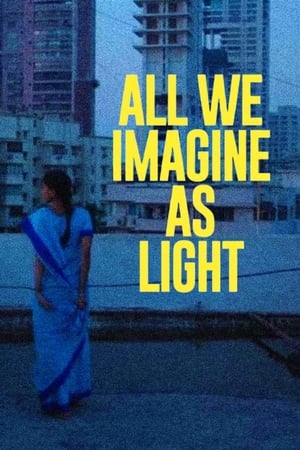All We Imagine as Light (2024) Movie Review – Where to Watch Online
The Artful Tapestry of Loneliness, Love, and City Life
Mumbai serves as the sprawling, pulsating backdrop for All We Imagine as Light (2024), an evocative film directed by Payal Kapadia. A cinematic mosaic of emotional dislocation, urban loneliness, and quiet rebellion, the film explores the lives of two nurses, Prabha (Kani Kusruti) and Anu (Divya Prabha), as they navigate love, loss, and survival in a metropolis teeming with contradictions.
With Kapadia’s deft storytelling and Ranabir Das’s stunning cinematography, the movie crafts a poignant narrative about human connections and the spaces we occupy in a chaotic world.
Plot Overview
Prabha, a reserved nurse in a busy hospital, struggles with the echoes of an arranged marriage gone silent—her husband left for Germany soon after their wedding and hasn’t been heard from since. Meanwhile, Anu, her younger roommate, navigates the throes of a secret interfaith relationship with Shiaz (Hridhu Haroon). Their stories intertwine with those of Parvaty (Chhaya Kadam), an older colleague facing eviction, creating a vivid portrayal of survival and intimacy in an ever-changing urban landscape.
The film opens with a documentary-style sequence, introducing Mumbai as a character itself. The city’s restless energy is palpable, from its bustling markets to crowded trains. Amid this, Prabha and Anu’s personal battles unfold, revealing how impermanence defines life in the metropolis.
Themes and Visual Storytelling
Kapadia’s direction shines in her ability to juxtapose bustling city life with moments of introspection. Mumbai is portrayed not as a chaotic hub but as a canvas where relationships, both fleeting and enduring, leave their mark. The stark contrast between the lives of Prabha and Anu reflects broader themes of tradition versus modernity and constraint versus freedom.
Key scenes, such as Prabha’s poignant embrace of a rice cooker sent anonymously from Germany, embody the aching solitude of her life. Similarly, Anu’s secret meetings with Shiaz highlight the tension of forbidden love in a society shaped by religious and cultural divides.
The interplay of light and shadow in Das’s cinematography mirrors the characters’ inner turmoil. Moments like Anu changing out of rain-soaked clothes or Prabha reading a poem under the glow of her phone flashlight capture the intimacy of their lives in the midst of chaos.
Where to Watch All We Imagine as Light
Currently, All We Imagine as Light is exclusively available in theaters. Its exploration of human relationships and urban life is best experienced on the big screen, where Kapadia’s intricate visuals come to life.
For updates on streaming availability, fans can monitor platforms like JustWatch here. Given Kapadia’s previous works and the film’s critical acclaim, it is expected to arrive on popular streaming services like Netflix, Mubi, or Amazon Prime Video in the near future. Rental and purchase options might also appear on Google Play Movies, Apple TV, and Vudu.
To explore more about the film, including behind-the-scenes insights and upcoming events, visit its official website here.
A Unique Blend of Drama and Magical Realism
The film’s final act takes viewers to Parvaty’s seaside village, a serene departure from Mumbai’s relentless pace. Here, the narrative embraces elements of magical realism. Prabha’s encounter with a nearly drowned man and the surreal experiences that follow provide a profound sense of closure and transformation.
Kapadia’s influences, from Chantal Akerman to Apichatpong Weerasethakul, are evident in these sequences. The boundaries between reality and imagination blur, reinforcing the film’s central message: the darkness of life is often illuminated by fleeting moments of connection and wonder.
Why All We Imagine as Light Stands Out
Kapadia’s ability to weave subtle political commentary into personal narratives elevates the film. Issues of gentrification, religious intolerance, and gender dynamics are not overtly addressed but subtly shape the characters’ lives.
The performances are deeply affecting. Kani Kusruti brings a quiet intensity to Prabha, while Divya Prabha’s portrayal of Anu brims with youthful defiance and vulnerability. Together, they create a compelling dynamic that captures the complexities of female friendships.
Conclusion: A Must-Watch Experience
All We Imagine as Light is more than just a film—it’s an emotional journey that stays with you long after the credits roll. Its delicate exploration of love, loss, and resilience is universal, resonating with audiences across cultures.
As the film transitions from theaters to streaming platforms, it is poised to become a favorite among cinephiles worldwide. Don’t miss the opportunity to immerse yourself in this cinematic masterpiece.
Eager to experience the magic of All We Imagine as Light? Head to your nearest theater today. Keep an eye on JustWatch for streaming updates, or visit the official website for exclusive content and news. Share your thoughts on social media and join the conversation using #AllWeImagineAsLight.
















